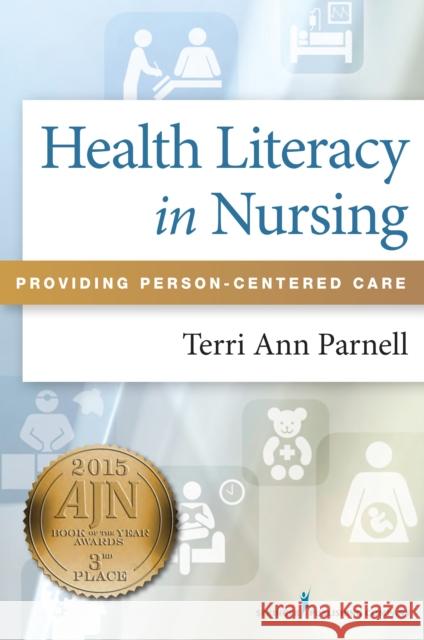Health Literacy in Nursing: Providing Person-Centered Care » książka
Health Literacy in Nursing: Providing Person-Centered Care
ISBN-13: 9780826161727 / Angielski / Miękka / 2014 / 320 str.
"Dr. Parnell has captured the essence of health literacy and cultural competence, not only for nurses, but also applicable to all care providers and community workers√n. and] provides us with a road map to enhance our success through health literacy and cultural competence. This is a must read for all health professionals." √>=Richard H. Carmona, MD, MPH, FACS (From the Foreword)
17th Surgeon General of the United States (2002√2006)
Distinguished Professor, University of Arizona Promoting the health literacy of patients across all settings is an essential component of prevention, wellness, and effective medical treatment. This health literacy textbook provides an overview of health literacy, discusses the magnitude of the issue, and explains implications of low health literacy. It details strategies to enhance effective communication between patients and nursing practitioners. Through case-based examples, this textbook and clinical guide assists nurses in developing the requisite skills needed to communicate effectively so that patients can truly make informed health decisions and enhance health outcomes. Health Literacy in Nursing promotes verbal and written communication strategies that nurses can use to effectively meet the individualized needs of an increasingly diverse patient population in an effort to enhance patient√provider communication across the entire continuum of care. It provides strategies for creating culturally appropriate written materials in plain language that patients can read and follow when they arrive home. Nursing professionals can build upon the basic tools offered in the text throughout their career to stay abreast of methods to effectively communicate and educate a culturally and linguistically diverse demographic. Additionally, the material can easily be incorporated into course content regarding "unique populations" (pediatrics, older adults, research participants, and those managing mental health and end-of-life care decisions) for whom health literacy is often overlooked. The book will be valuable to undergraduate and graduate nursing students studying to meet advanced nurse practice competencies and is an essential resource for practicing nurses who must stay abreast of evolving standards and regulations related to the provision of safe and effective patient and family-centered care. Key Features:
- Provides a solid foundation for developing skills that foster health literacy among all patients and practitioners
- Assists in meeting the regulatory requirements for providing culturally and linguistically appropriate patient education
- Includes guidelines for improving health literacy according to increasingly evolving regulatory standards
- Includes case-based examples to illustrate the purpose and effectiveness of enhancing patient and provider health literacy skills
- Addresses both oral and written communication strategies











